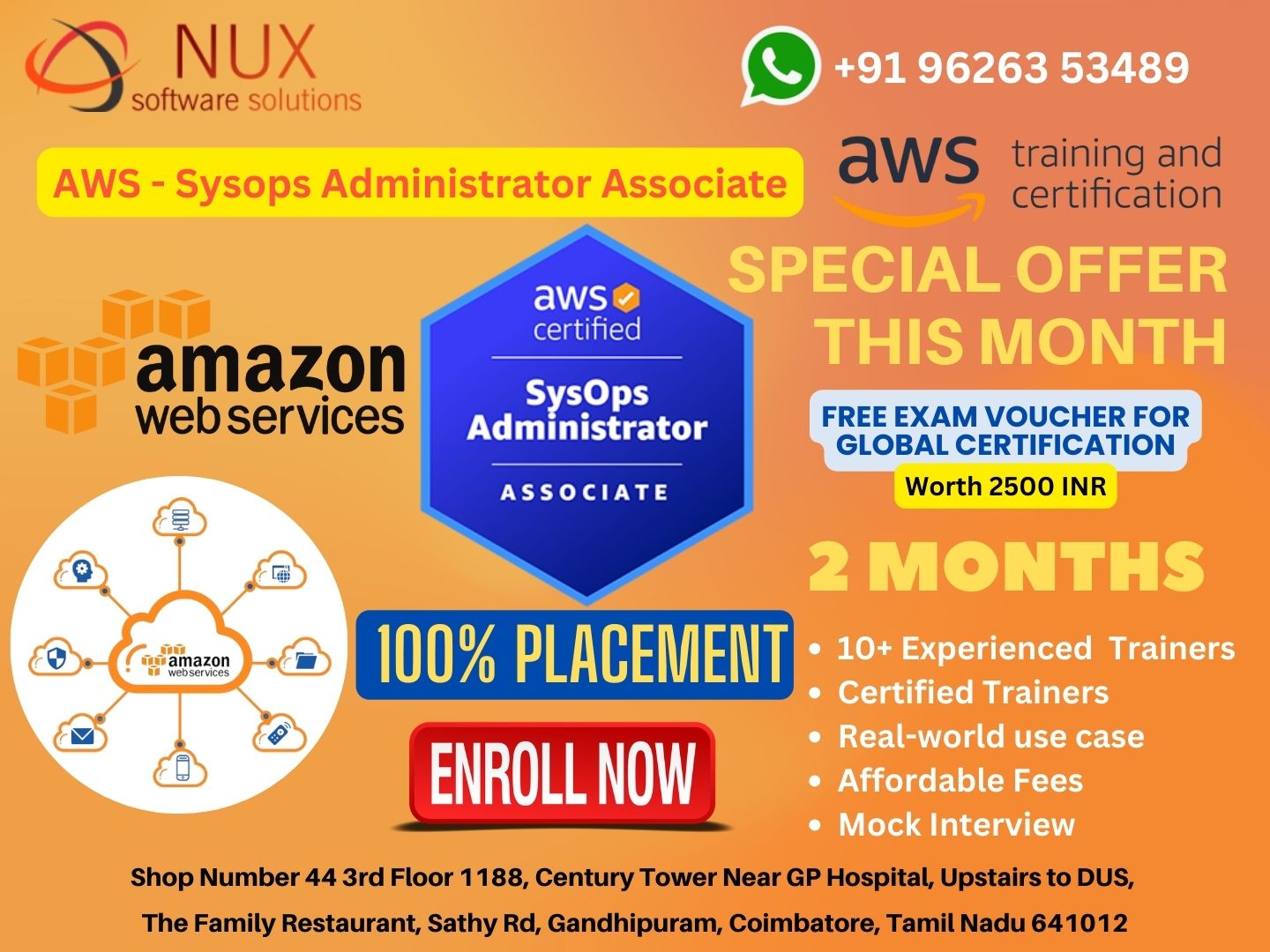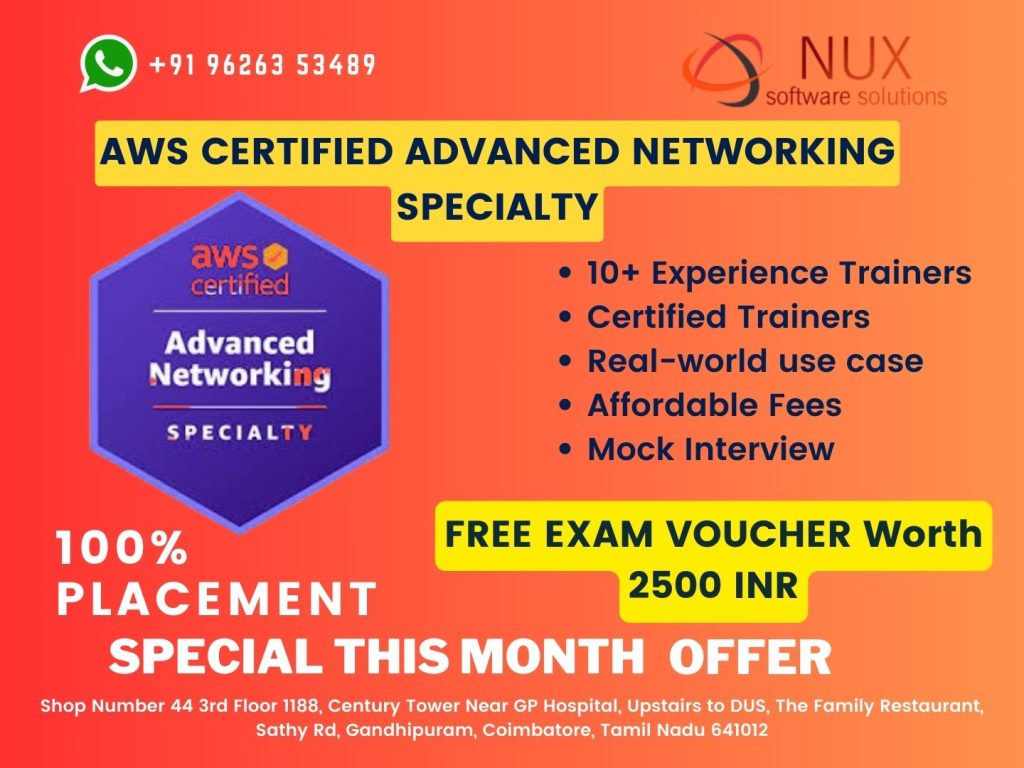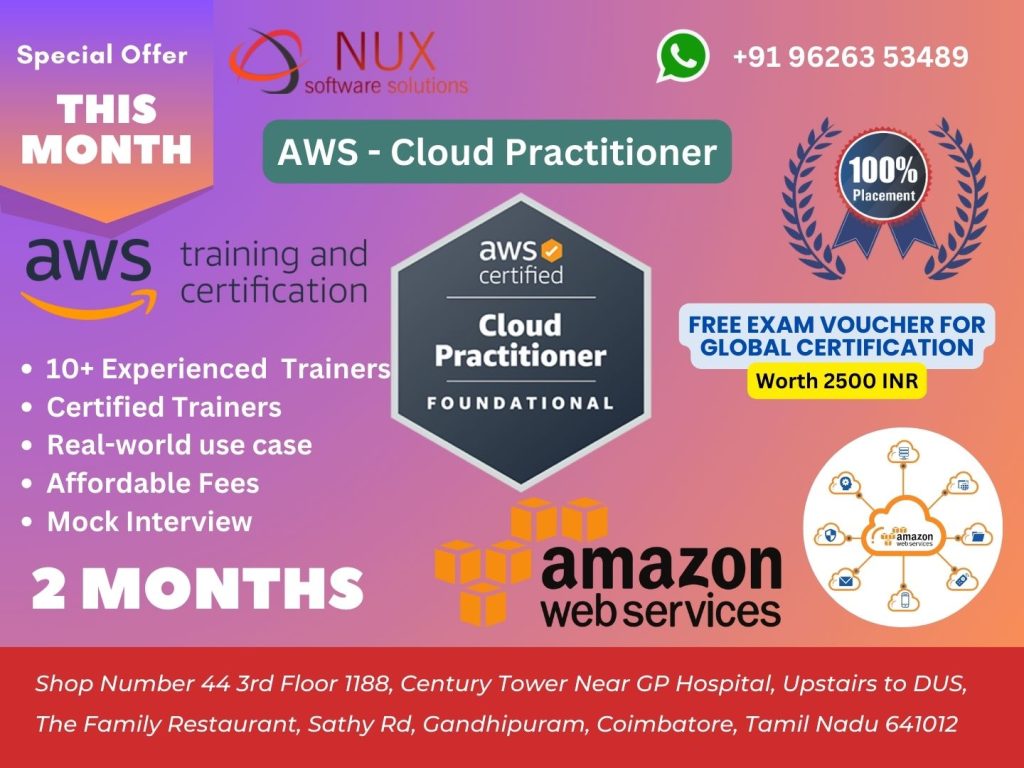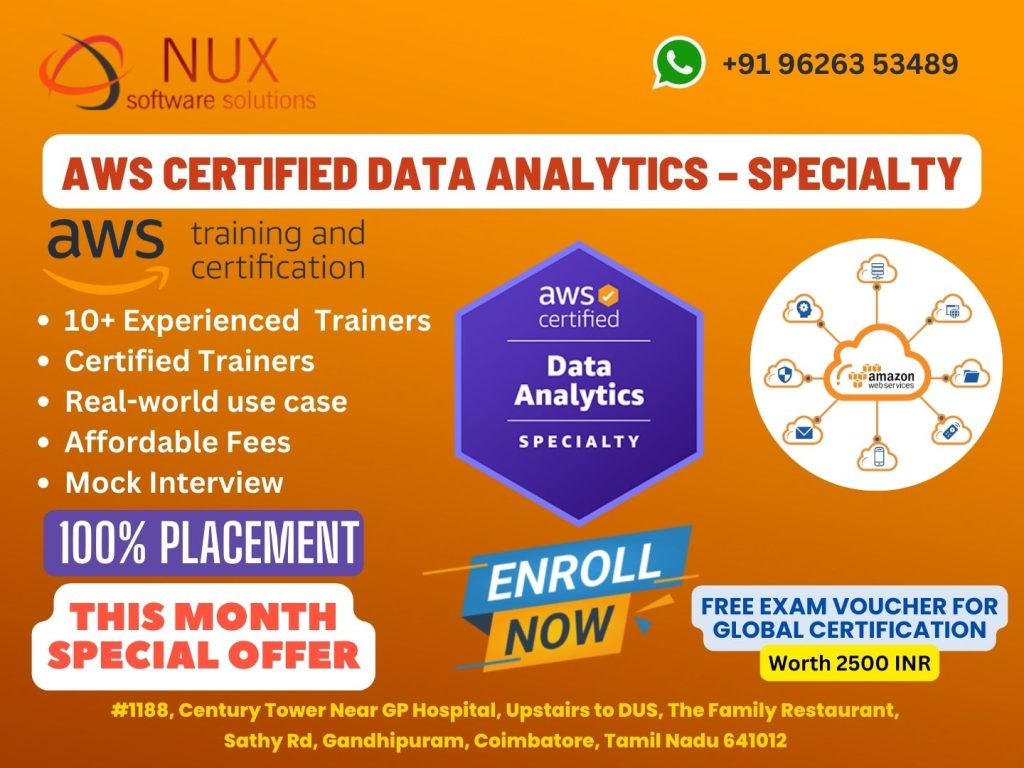AWS certified sysops administrator associate (SOA-C02)

Best AWS certified sysops administrator associate Courses in Coimbatore
The AWS Certified SysOps Administrator – Associate (SOA-C02) certification is designed for system administrators, operations engineers, and IT professionals responsible for managing, maintaining, and operating workloads on the AWS cloud. This course emphasizes hands-on technical expertise in deployment, monitoring, automation, and troubleshooting cloud-based systems using AWS services.
At Linux Training Center in Coimbatore, we provide industry-aligned training that prepares you to confidently handle real-world cloud operations and pass the SOA-C02 certification exam. The course offers in-depth knowledge of networking, security, cost optimization, performance tuning, backup and recovery, and resource management—all critical for running robust infrastructure on AWS. With our practical labs, exam-focused content, and real-time projects, you’ll develop the skills to manage cloud environments efficiently and ensure business continuity.
Who Should Enroll?
This course is ideal for system administrators, Linux administrators, support engineers, cloud operations professionals, and IT personnel who manage cloud resources and want to specialize in AWS cloud operations. It is also a great next step for those who have completed the AWS Cloud Practitioner certification or equivalent foundational training.
What You Will Learn
You will learn to deploy, manage, and operate scalable, highly available, and fault-tolerant systems on AWS, implement security and compliance controls, monitor and log system performance using Amazon CloudWatch and CloudTrail, automate deployments with CloudFormation and Elastic Beanstalk, perform data backup, recovery, and disaster recovery planning, manage billing, cost allocation, and operational health, and identify and resolve incidents in live cloud environments. Our hands-on training ensures that you not only understand these concepts but can implement them confidently.
Prerequisites
A strong understanding of basic AWS services and Linux system administration is recommended. Familiarity with networking, monitoring tools, and shell scripting will enhance your learning experience. Prior cloud operations experience is beneficial but not required, as we provide foundational AWS modules for all learners.
Course Benefits
100% alignment with SOA-C02 certification objectives, live AWS lab access and real-time troubleshooting projects, performance and cost-optimization case studies, mock exams and exam readiness support, guidance from AWS Certified SysOps Trainers, and post-training placement assistance.
Career Opportunities After Certification
On completing this course, you’ll be prepared for roles such as AWS SysOps Administrator, Cloud Operations Engineer, Site Reliability Engineer, Cloud Infrastructure Engineer, and Systems Support Specialist – AWS.
Build your expertise in cloud operations and become a certified AWS SysOps Administrator with our SOA-C02 course at Linux Training Center, Coimbatore. Our expert guidance, hands-on labs, and focused certification training will help you confidently operate and optimize AWS infrastructure.
Enroll now and take your career in system administration to the cloud. Reach out today to reserve your spot in the upcoming batch.
AWS Certified SysOps Administrator - Associate Syllabus
Chapter 1
Monitoring, Logging, and Remediation
Implement metrics, alarms, and filters by using AWS monitoring and logging servicesRemediate issues based on monitoring and availability metrics
Chapter 2
Monitoring & Reporting, CloudWatch Introduction, Monitoring EC2 With Custom Metrics, Monitoring EBS, Monitoring ELB, Monitoring Elasticache, Metrics From Multiple Regions & Custom Dashboards, Create A Billing Alarm, AWS Organizations Lab, AWS Resource Groups & Tagging, Cost Explorer & Cost Allocation Tags, EC2 Pricing Models, AWS Config 101, AWS Config Lab, AWS Config Vs AWS CloudTrail Vs CloudWatch, Health Dashboards, Monitoring & Reporting Summary
Reliability and Business Continuity
Implement scalability and elasticity
Implement high availability and resilient environments
Chapter 3
Deployment & Provisioning, Deploy An EC2 Instance Lab, EC2 Launch Issues, EBS Volumes And IOPS, What Is A Bastion Host?, Elastic Load Balancers, ELB Error Messages, ELB CloudWatch Metrics, Deploying An Application Load Balancer Lab, AWS Systems Manager, Placement Groups, Deployment & Provisioning Summary
Deployment, Provisioning, and Automation
Provision and maintain cloud resources
Chapter 4
High Availability, Elasticity & Scalability 101, RDS And Multi-AZ Failover, RDS & Using Read Replicas, RDS & Using Read Replicas Lab, RDS - Encrypting RDS Snaps, Sharing Encrypted RDS Snapshots With Other AWS Accounts, RDS What Versions, Aurora 101, Aurora Lab, Which Services Have Maintenance Windows, Elasticache, Cloud Front & Cache Hit Ratios, Trouble Shooting Potential Autoscaling Issues, High Availability Summary
Security and Compliance
Implement and manage security and compliance policies
Implement data and infrastructure protection strategies
Chapter 5
Storage & Data Management, Introduction to S3, S3 Lab, S3 Lifecycle Policies, MFA Delete, S3 Encryption, S3 Encryption Lab, EC2 Volume Types, Upgrading EC2 Volume Types - Lab Encryption & Downtime, KMS & CloudHSM, AMIs, Sharing AMIs, Snowball & Snowball Edge, Storage Gateway, Introducing Athena, Athena Lab, Introduction To EFS, EFS Lab, Storage & Data Management Summary
Networking and Content Delivery
Implement networking features and connectivity
Configure domains, DNS services, and content delivery
Chapter 6
Security & Compliance, Compliance On AWS, DDOS, AWS Marketplace Security Products, IAM Custom Policies Lab, Roles & Custom Policies Lab, MFA & Reporting With IAM Lab, Security Token Service, Security & Logging, AWS WAF, AWS Hypervisors, Dedicated Instances Vs Dedicated Hosts, AWS Systems Manager EC2 Run Command, AWS Systems Manager Parameter Store, Pre-signed URLs with S3, S3 - Restrict IP Addresses, AWS Config With S3, Inspector vs Trusted Advisor, AWS Service Limits, Shared Responsibility Model, other Security Aspects, CloudTrail - Turning It On and Validating Logs, CloudTrail - Protecting Your Logs, Security Summary
Chapter 7
Networking, VPC Overview, Build Your Own Custom VPC - Part 1, Build Your Own Custom VPC - Part 2, Creating a NAT Instance, Network ACLs and Security Groups, VPC Endpoints, VPC Flow Logs, VPC Clean Up, VPC CIDR Calculations, VPC Summary, DNS 101, Register a Domain Name Lab, Weighted Routing Policy Lab, Latency Routing Policy Lab, Failover Routing Policy Lab, Geolocation Routing Policy Lab, Multivalue Answer Routing, DNS Exam Tips
Chapter 8
Automation, Introducing CloudFormation, CloudFormation Lab, Introducing ElasticBeanstalk, Elastic Beanstalk Lab, OpsWorks, Automation Summary
Cost and Performance Optimization
Implement cost optimization strategies
Implement performance optimization strategies



